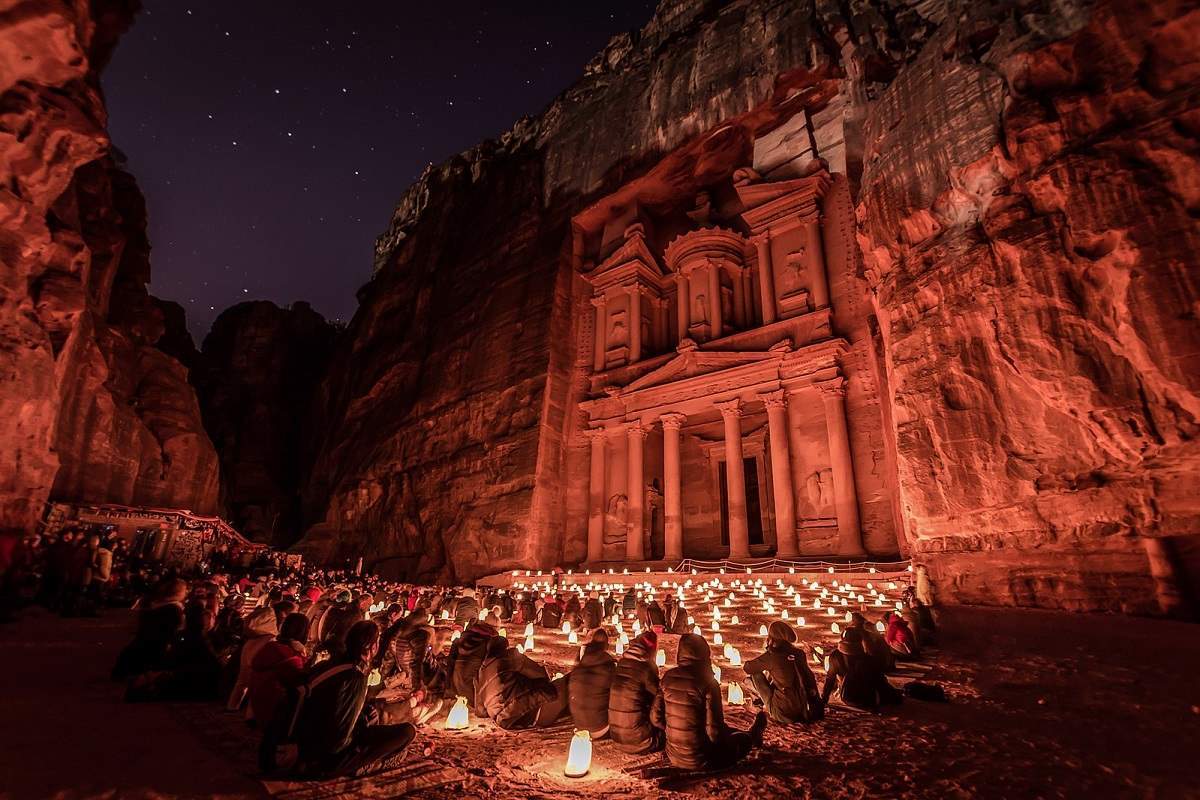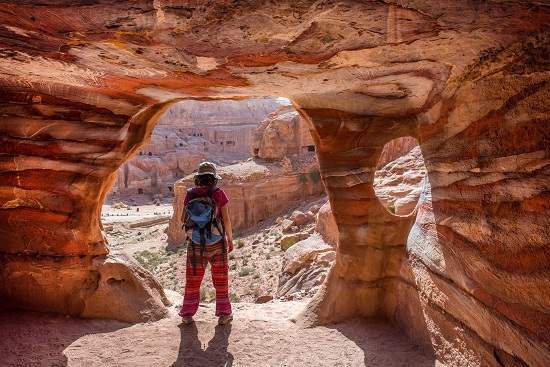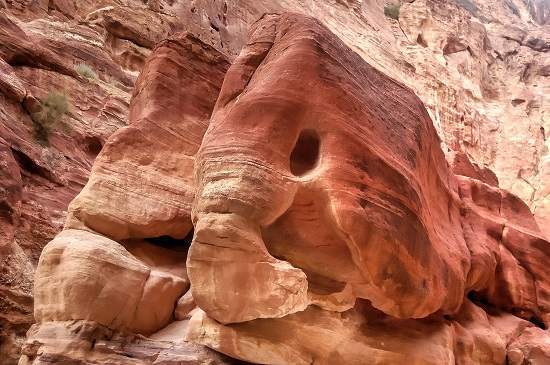AMMAN — Visitors to one of the new seven world wonders, the rose-red
marvel that is Petra, are advised to carefully plan their visit if they wish to
enjoy the site and not miss out on any of its highlights.
اضافة اعلان
Petra, 235km south of Amman, was built 2,000 years ago by the
Nabataeans, an Arab tribe; it is famous for its façades cut into its sandstone
mountains.
This UNESCO site is the largest and most visited in Jordan
and appeared in many famous movies, such as Indiana Jones and The Last Crusade and
Transformers 2 : The Revenge of the Fallen.
There is no single trip to Jordan that does not include
Petra, and many people would visit Jordan just to see it.
Petra can be visited in many different ways. Some visit for
a couple of hours, others might book for several days to see every part of the
archeological site and participate in other activities.
The common visit is usually a full-day exploration of the
main site, with a local guide for the first four hours.
After the guided tour, guests can continue sightseeing on
their own, choosing one or more of the many optional hikes, like climbing up to
the Monastery, the High Place of Sacrifice, Jabal Harun, or the Khubtha Trail.
Golf carts and horses are available at the main entrance for
an additional fee, only for the first 2km of the trail.
Golf carts are allowed to go the whole way down to the
Treasury, where mules, donkeys, and camels would be waiting to carry people
further into the site.
After a long day of hiking, visitors return to their hotels to
prepare for a night in Petra.
 View of Petra at night. (Photo: Wikimedia Commons)
View of Petra at night. (Photo: Wikimedia Commons)
Petra by night is most popular; it is the only activity that
allows visitors to enter the site after sunset.
This event entails a 2Km walk with candles lighting
the Siq and the Treasury. At the end of the trek, guests can delight in
listening to the stories and traditional music of local hosts.
Visitors who do not wish to see Petra by night can join a
cooking class and learn how to make their own Jordanian dishes, such as mansaf,
maklouba, or galayeh.
Accommodation in Petra ranges from international 5-star
hotels to bed and breakfast, all located in the Wadi Mousa town. Desert camps
are also available in the nearby Baidha area.
Food is available at hotels, tourist and local restaurants,
bars, cafés, and supermarkets.
Guests also have the opportunity to join an organized family
meal and interact with the locals in their homes.
Most visitors arrive at Petra overnight to start the visit
to the site early in the morning.
 View of Petra at night. (Photo: Flickr)
View of Petra at night. (Photo: Flickr)
For guided tours, possible in almost all common languages, the
guide meets his guests at the visitor center, and from there, they walk down
Bab As-Siq area, with a stop at the Obelisk Tomb, a burial complex with four
pyramid-shaped pillars at the top, which, it is believed, symbolize those
buried in the four side graves of the inner chamber.
Bab as-Siq, meaning laterally “the door of the Siq” ends at
the Dam, which was built by the Nabataeans to protect the city’s entrance from
floods.
The Siq, the original main entrance of Petra, is 1,200
meters long and one of the top highlights. Several landmarks may be seen there,
including the aqueducts that the Nabataeans made to draw water into their
capital city.
 (Photo: Envato)
(Photo: Envato)
Toward the end of the walk in the Siq, Jordan’s most famous
monument starts to appear: the Treasury. It is the tomb where the Holy Grail was
hidden, according to Indiana Jones.
The Treasury, a 40-meter-high by 29-meter-wide façade carved
into the rock, is believed to have been built as a tomb for King Aretas IIII in
9 BC-40 AD, according to archeologists. It got its name from a local myth about
a hidden treasure inside.
After the Treasury, the site starts to open toward the rest
of the ancient city. The main trail passes by several monuments; one is the
theater, which once seated 5,000 spectators, archeologists say.
Petra also has a colonnaded street known as the decumanus,
built probably in the 2nd century AD, when the city was annexed by
the Roman Empire and became the capital of the Roman Province of Arabia.
At the end of this street, there are three freestanding
temples: the Great Temple, the Temple of the Winged Lions, and the Temple of
Dushares (Qasr el Bint). The last has puzzled archeologists with its stripes of
wood enclosed into its walls, maybe to absorb earthquakes.
 (Photo: Envato)
(Photo: Envato)
Opposite to Qasr el Bint is Petra Church, a Byzantine church
built in the 6th century where archeologists found very important
papyrus scrolls that provided rare information about Petra during that era.
There, the guided tour ends, giving the visitors the time to
return back or start one of the most famous hikes in Jordan, up to the
Monastery, a huge façade that dates back to the 1st century BC and
is thought to have been built as a temple to worship Nabataean King Obodas.
The climb to the Monastery can be done walking or on a mule.
It is around 800 stairs carved into the rock, and going all the way up is
highly rewarding, because of the Monastery itself and because of the
spectacular views all around. It makes for a great spot to watch the sunset.
 (Photo: Flickr)
(Photo: Flickr)
Petra back-trail is the option for some people who wish to
see the Monastery first and then climb down to see the rest of the site.
This back trail usually starts after spending a night at a
Bedouin camp in Baidha, an ancient suburb of Petra.
Petra is more than an archeological site. A visit needs two
or more nights to discover and experience the local culture.
Read more Travel





